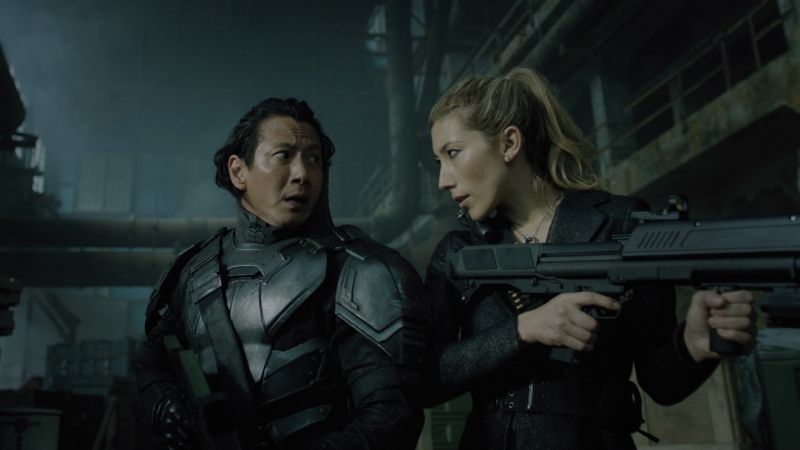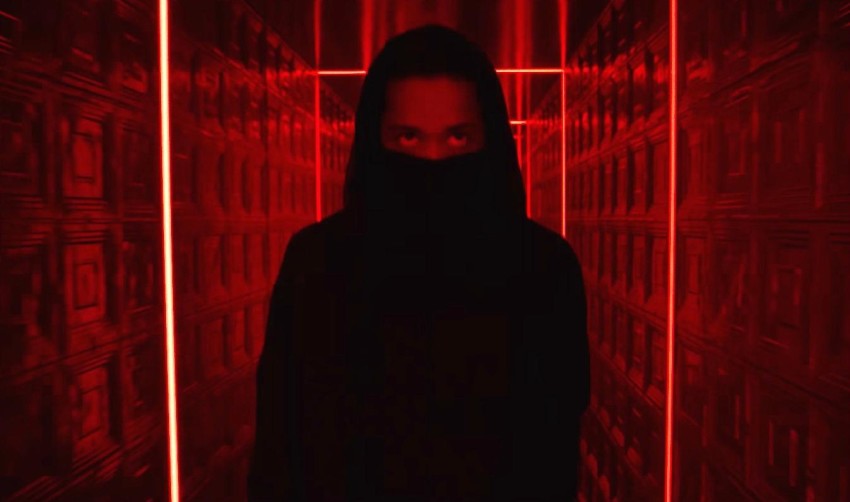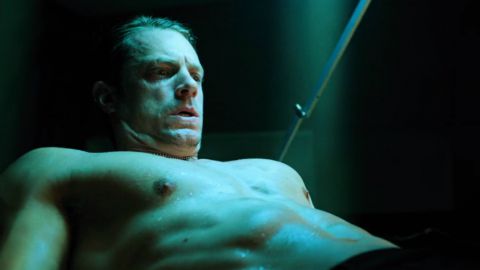Sword Art On… Netflix
June 24, 2018 · 0 comments
By Hugh David.
 In a possible near future, humanity has achieved the ability to upload human consciousness into VR environments. Within those environments, however, all sorts of scenarios, good and bad, can play out, sometimes at risk to the body left in the real world.
In a possible near future, humanity has achieved the ability to upload human consciousness into VR environments. Within those environments, however, all sorts of scenarios, good and bad, can play out, sometimes at risk to the body left in the real world.
On hearing this description, where a certain generation of anime fan’s mind might understandably leap to the cyberpunk world of Ghost in the Shell, a younger one would instead think of ongoing hit franchise Sword Art Online, arguably one of the most internationally prominent Japanese franchise currently alongside Attack on Titan and Tokyo Ghoul. However, the deadly VR MMORPG of that show is only the latest in a long line of such stories found in written and visual SF, and if you asked a more mainstream, casual viewer of today’s streaming television you might well be met with the name Altered Carbon.
Also a novel adaptation, Altered Carbon was the writing debut of Richard K. Morgan, published around the same time as the original Sword Art Online light novel. Coming in at the tail end of the Cyberpunk genre, the action-packed, noir-styled adventure included VR and uploaded consciousness tech but focused more around the core idea of most humans having hard drives installed from young in their necks to record and retain their consciousness, allowing people to “re-sleeve” into other bodies. The VR elements at first seem less central, but were then explored further in the excellent sequel novels.
After years of failed attempts to adapt it into a film, Altered Carbon debuted as a Netflix original series earlier this year. This is where it connects to Sword Art Online and the other anime mentioned earlier; the global streaming giant has been instrumental in making these Japanese shows gateway series for teenage viewers in the U.K., and as everyone who studies Netflix knows, they collect and crunch their data. This is what leads to their choices in original productions – their initial offerings (House of Cards and Orange is the New Black) were put together based on viewing data gathered about existing shows and films as much as on the showrunners’ initial visions. Put all of this together, and their simultaneous announcement that the next offering from Carbon’s showrunner Laeta Kalogridis for Netflix will be a live-action version of Sword Art Online should not have been a surprise. In fact, it makes complete sense.
 Netflix’s move into Japan and South Korea has seen an increase in their original productions for both, some of which have come to other territories and some have not. Sword Art Online represents the perfect crossover if it can be pulled off to the satisfaction of the various audience segments. However, as has been shown in the past that can be tricky; Netflix’s reduction of Death Note (pictured above) to an American-set, English-language feature film failed to satisfy on numerous levels. Can we find any clues in that failure, Carbon’s relative success or Laeta Kalogridis’ statements during the press interviews to promote the latter?
Netflix’s move into Japan and South Korea has seen an increase in their original productions for both, some of which have come to other territories and some have not. Sword Art Online represents the perfect crossover if it can be pulled off to the satisfaction of the various audience segments. However, as has been shown in the past that can be tricky; Netflix’s reduction of Death Note (pictured above) to an American-set, English-language feature film failed to satisfy on numerous levels. Can we find any clues in that failure, Carbon’s relative success or Laeta Kalogridis’ statements during the press interviews to promote the latter?
What worries most western fans is the issue of “whitewashing”, the practice of casting people in roles originally clearly designated as Asian. If one follows the controversies, this includes casting actors of African or South Indian descent in such roles, too. The irony of white fans decrying actual diversity achieved in the name of diversity itself remains lost in many of these online slinging matches. Kalogridis has already spoken publicly on this issue when interviewed by the entertainment website Collider:
“SAO is an essentially Japanese property, in which Kirito and Asuna, who are the two leads, are Japanese. In the television show, Kirito and Asuna will be played by Asian actors. Whether or not that was the question underneath your question, it’s not a conversation about whitewashing. When I sold it to Netflix, we were all on the same page. They are not interested in whitewashing it, and I am not interested in whitewashing it. In terms of the secondary characters, because the game is meant to be global, the way it’s presented in the anime and in the light novels, there are secondary characters that clearly are from other parts of the world, like Klein and Agil. To me, it’s very obvious when you watch it that you’re meant to take that this game spans the globe, but Kirito and Asuna are very clearly located as kids from Japan, and Tokyo, if I’m not mistaken.”
Given the diverse range of actors she employed for Altered Carbon, deliberately changing ethnicities from the book or casting colour-blind where none were specified by the author on the page, it seems certain that although it will be shot and streamed in English, the potentially largest controversy may well be side-stepped from the start.
However, fans are notoriously picky, and other production decisions may well still jeopardise the success of the show in the eyes of the loyal. Altered Carbon made radical changes to the lead’s relationship with its main villain, while borrowing backgrounds from the third novel to integrate in this version. Some felt these all made sense; others that it smacked too much of trying to shoehorn in unnecessary material that oversimplified character motivations and plotting. Kalogridis describes SAO’s female lead Asuna as “sort of the savior of the world” in the minds of her and the adaptation’s showrunners Patrick Massett and John Zinman; this is a description many fans of Kirito, the male lead, would disagree with. On the other hand, there are several story arcs within the light novels still untouched by the animated series, so we may find ourselves seeing some story elements of those at play.
This statement about Asuna also raises another oft-discussed issue with SAO, and that is the sadistic violence certain villains often mete out to female characters. Combined with the fan-service in some arcs, the blend often leaves a sour taste in viewers’ mouths. Addressing similar notions in Altered Carbon, Kalogridis and her production team together chose to make changes; a VR torture sequence, in which hero Takeshi Kovacs’ consciousness is placed into a female body (or “sleeve”) and subject to actual tortures Amnesty International recorded as being used on women in specific conflicts in various parts of the world, was changed so that the male sleeve he wears in the series is kept in VR. On the one hand, a real-world political reference was removed; on the other, easy viewer identification was kept. One suspects similar choices will be made in the SAO adaptation. As for fan-service, Altered Carbon includes nude combat scenes that don’t exist in the book; make of that what you will!
Massett and Zinman have a working relationship with Kalogridis that appears to date back to the latter rewriting the former’s script for the Angelina Jolie-starring movie-version of Tomb Raider. Looking at the number of TV shows the pair have worked on since, including a sequence of praised but cancelled one-seasoners from famed producer Shawn Ryan, suggests that if nothing else, as with Altered Carbon, action and setting will be very well realised. Netflix never appear to make anything particularly cheaply, so if nothing else the rendering of the fantasy world and the visual effects should be able to live up to the lush animation fans are used to. These days, however, that is no longer enough for success; we will have to wait and see as to whether we get another House of Cards, a Death Note or something neither fish nor fowl.
Sword Art Online II is released in the UK by Anime Limited. The live-action series is coming soon from Netflix.

Leave a Reply